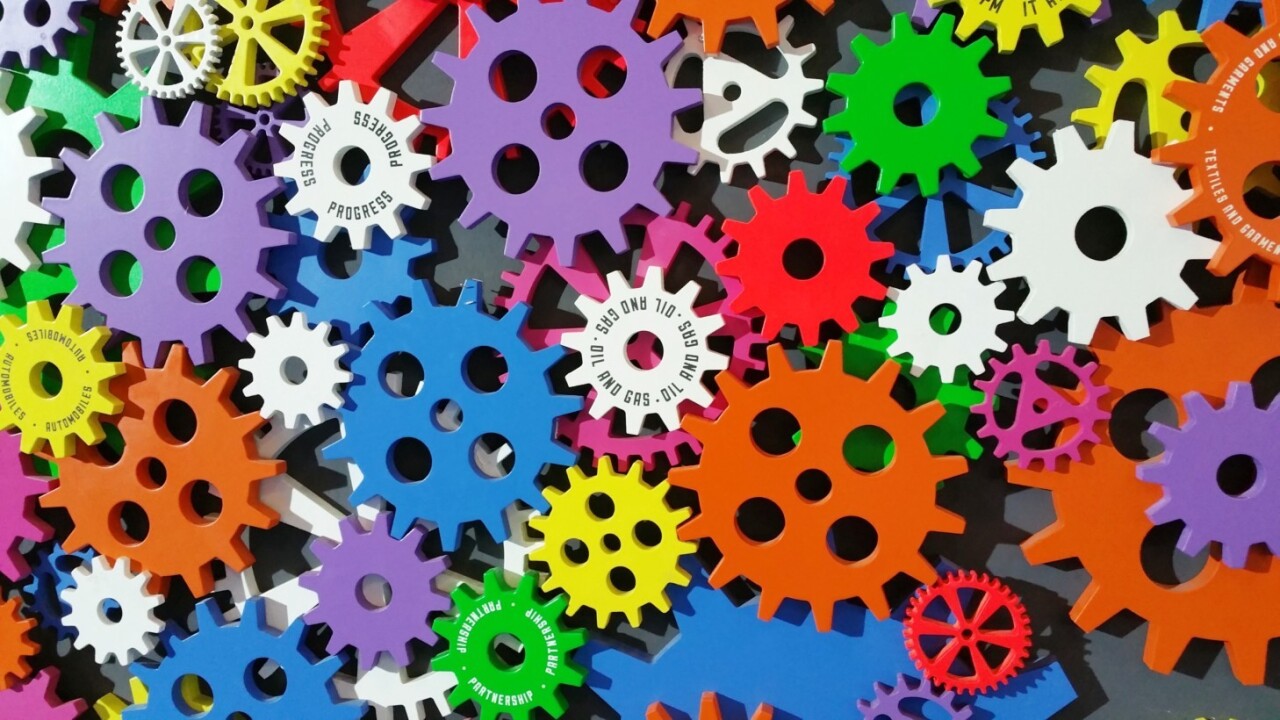
Creativity is a term thrown about the workplace all too often. It bounces off the walls, flying over the heads of employees, and often fizzles out in a corner, without always having made the desired impact. It’s no wonder then, many employees switch off as soon as they hear the word.
80 percent of people feel pressured to be productive rather than creative at work and most people don’t even believe that they are creative in the first place. However, imaginative thinking can improve efficiency, solve difficult problems and grow profits. So, how can negative feelings towards creativity in businesses be beaten?
Coming up with new ideas is the easy and fun part. How you apply them to your business so employees see value in the process of creative idea generation can be challenging.
There are plenty of out-there ideas when it comes to encouraging next-level thinking, but we need to be mindful not to unnecessarily stretch resources and budgets in pursuit of whacky ideas, which might confuse employees even further. Here are some tips I’ve found most effective when it comes to lowering ‘creative negativity’ in the workplace.
Redefine its meaning
Like any skill that you are trying to cultivate, creative thinking requires intentional focused effort. You have to carve out time to think and practice. For it to be successful in the workplace, your company has to also be supportive of the concept. Leaders need to talk about it, set the example and encourage employees to develop and use this skill.
It turns out that meditation and other restful practices don’t just help workers disconnect — they may actually heighten innovation. Neurologist Marcus Raichle, used fMRI scans to look inside the brain. He discovered when individuals ‘zone out’ or daydream, a certain area is unconsciously activated and this brain behavior — one that is unconsciously “on” when we think we’re switched off — surprisingly, often results in pioneering breakthroughs.
Our most useful insights could be instilled by ‘in between thinking’ — the small gaps between our deliberate, active thoughts, but we still need to help employees understand this and re-think the definition of creativity.
It’s possible to nurture innovation through rest and downtime, rather than in high-pressure brainstorms or spending hours of late nights on research. Offering or contributing towards training courses in mindfulness, meditation or yoga as part of your employee benefits should encourage employees to make lifestyle changes, that will make result in a more productive workplace.
Get on board with AI
According to the 2017 Global Human Capital Trends survey, 31 percent of companies are in the process of implementing AI and robotics. AI has the potential to change art, creativity and the way businesses create the next generation of customer experiences.
One big issue is that a lot of data isn’t smart. Often, it doesn’t recognize the human element from its results (i.e. lifestyle attitudes and sentiment) and takes a lot of analysis and even guesswork to come up with insights that will enhance your creative, business strategy.
One brand that is starting to bridge the gap between human and machine learning is Spotify, by marrying user habits such as playlist creations with crowd-sourced behaviors that create personalized playlist suggestions.
However, AI can solve the scalability problem, which has blocked truly personalized services for years. Take for example the time-intensive process of hiring new employees. A San Francisco-based startup, Mya Systems, is currently developing an AI recruiter to rate resumes, schedule interviews and speak to applicants, which means HR advisors will have more time to focus on driving other workplace policies and improvements, because they’re not having their time taken by boilerplate tasks.
That’s why the emergence of machine learning is so appealing. Computers free us up to concentrate on more creative tasks, that can make a real difference.
Businesses should be looking at ways to use AI to take over menial, data-heavy workplace chores. This will free-up employees’ emergent individual qualities, which push us to access the more complex parts of our brains.
When routine work is automated, negativity will lower due to the reduction of less interesting work and workers will be able to access higher reasoning, critical thinking and more complex problem-solving skills.
Get rid of confusing job titles
Businesses are increasingly giving creativity a seat at the top table, but how effective is having a ‘Chief Innovation Officer’ in promoting an inspired working environment? A CIO should be the shining light of creativity within a business, but that doesn’t mean they switch off everyone else’s light bulbs. If not handled correctly, putting one person in charge of this can give the impression that nobody else needs to be.
Instead, senior team leaders should take a more active role in driving changing attitudes across the workplace. Eliminating or toning down ‘traditional’ fixed hierarchies encourages open dialogues and collaboration at all levels and if everyone is held accountable for creativity from the ground up, a business is more likely to grow their own army of ‘entreployees’.
These individuals feel encouraged to use the principles of entrepreneurship, spearheading new programs, products, services, innovations, and policies. Entreployees are also more likely to have greater job satisfaction because they can also be in a position of leadership, build their own credibility and make a meaningful impact on the business.
Banish the failure complex
Eureka moments are rare in business and innovation is usually a long journey made up of small steps. It is common for employees to feel pressured into coming up with ground-breaking ideas quickly, which can cause a debilitating fear of failure.
However, it’s important to convey that struggle and productive failure aren’t consequences of the work, but rather the driving forces behind it and future success.
You must have a bias toward action. When you start feeling the fear of failure then you need to do something, take action, move forward.
The Museum of Failure which recently opened in Helsingborg, includes products from some of the most innovative companies such as Google and Apple to highlight that failure is a very natural and essential part of the creative process.
We need to create a more open and less judgemental environment for idea-sharing. There isn’t a magic solution to this — some employees may prefer anonymous submission boxes or the more extrovert may enjoy brainstorming. ‘Greenhousing’ can also be effective — a technique similar to the traditional brainstorm, but which normally involves a smaller team and a facilitator to ensure everyone gets the chance to speak and ideas are built upon in a more structured way.
First, you need to take some action to let employees know that creative thinking is allowed, encouraged and expected in the workplace. Then you need to set the example and try a few approaches at creative thinking. Possibly, even an approach that intentionally fails so your employees will see that it is OK.
Ultimately you need to find out what methods work for your own business — and stick to them.
Get the TNW newsletter
Get the most important tech news in your inbox each week.





